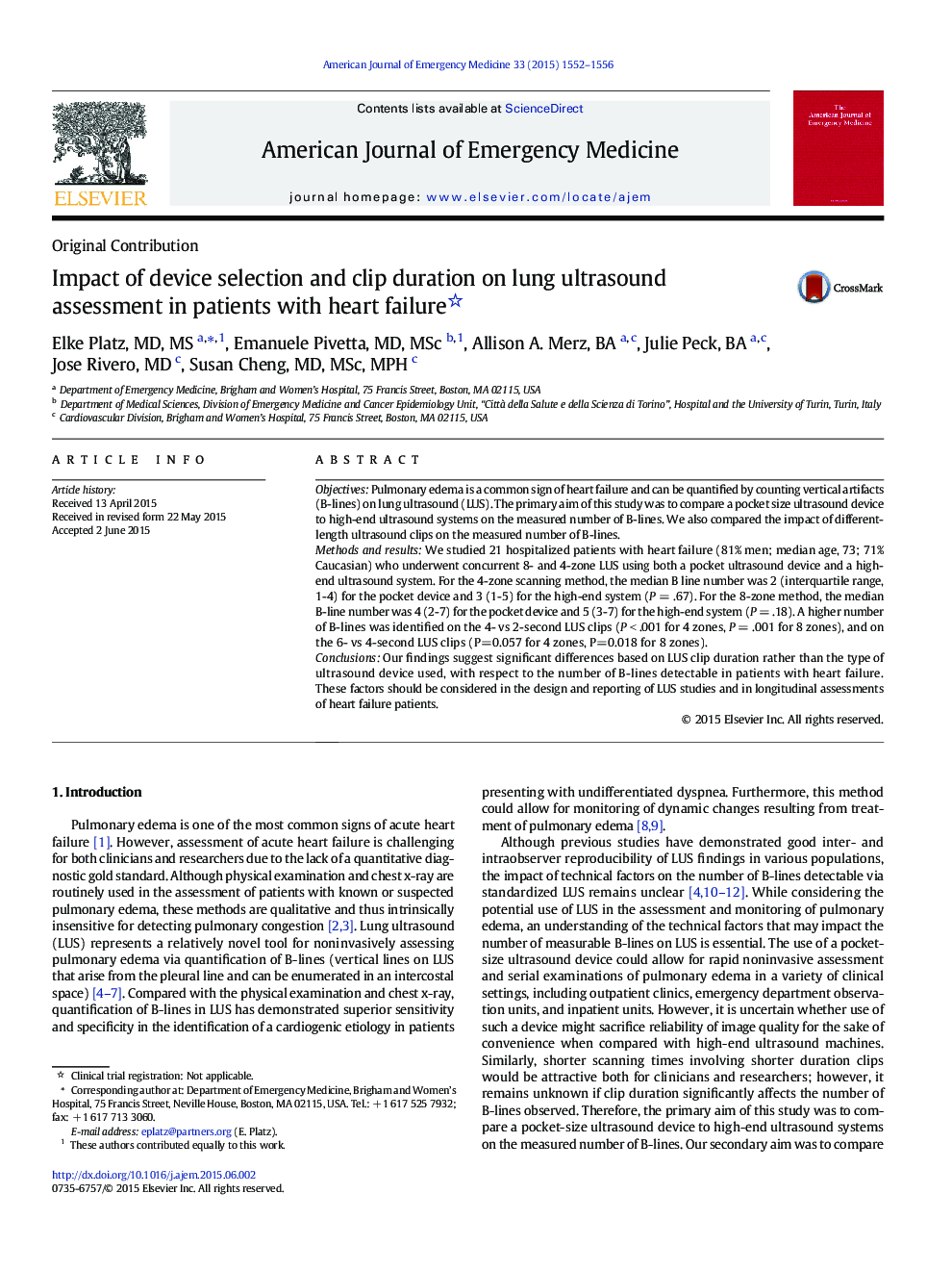| Article ID | Journal | Published Year | Pages | File Type |
|---|---|---|---|---|
| 3223634 | The American Journal of Emergency Medicine | 2015 | 5 Pages |
ObjectivesPulmonary edema is a common sign of heart failure and can be quantified by counting vertical artifacts (B-lines) on lung ultrasound (LUS). The primary aim of this study was to compare a pocket size ultrasound device to high-end ultrasound systems on the measured number of B-lines. We also compared the impact of different-length ultrasound clips on the measured number of B-lines.Methods and resultsWe studied 21 hospitalized patients with heart failure (81% men; median age, 73; 71% Caucasian) who underwent concurrent 8- and 4-zone LUS using both a pocket ultrasound device and a high-end ultrasound system. For the 4-zone scanning method, the median B line number was 2 (interquartile range, 1-4) for the pocket device and 3 (1-5) for the high-end system (P = .67). For the 8-zone method, the median B-line number was 4 (2-7) for the pocket device and 5 (3-7) for the high-end system (P = .18). A higher number of B-lines was identified on the 4- vs 2-second LUS clips (P < .001 for 4 zones, P = .001 for 8 zones), and on the 6- vs 4-second LUS clips (P=0.057 for 4 zones, P=0.018 for 8 zones).ConclusionsOur findings suggest significant differences based on LUS clip duration rather than the type of ultrasound device used, with respect to the number of B-lines detectable in patients with heart failure. These factors should be considered in the design and reporting of LUS studies and in longitudinal assessments of heart failure patients.
